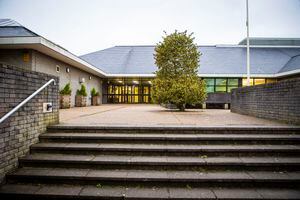We can’t afford to ‘spend, spend, spend’
‘Revive and thrive’ should not be used as an excuse to rush capital projects through, says Peter Gillson

A REPORT which passed with surprisingly little comment was the critical review from Scrutiny into capital expenditure, or more precisely just how little has been spent, and how complicated the approval process, controlled by P&R, is.
I do have some sympathy with P&R – on the one hand deputies want the best and on the other P&R has to ensure that not only do we get value for money, but that what we build is actually affordable.
Any system to control capital spending will have to satisfy these conflicting pressures.
Outside of the States, an organisation’s cash-flow is a real constraint. For instance, I was involved in a capital project for a charity, for which we asked the users what they wanted. This list was costed and they were told we could not afford all they wanted, only what they needed. Compromises were made and the project is considered a great success.
That cash-flow limitation does not exist to the same degree in the States – there is very little political difference in asking for £40m. or £44m., so it is easy for a project specification to creep up, to include nice-to-haves. Any capital allocation process has to include controls or pressures to ensure what is built is actually needed rather than what is wanted.
This is especially so in the post-Covid world where we are in debt and have significant additional annual costs to bear.
Every penny counts.
I’m not suggesting the system should not be changed, but any change needs to ensure it retains robust checks and balances to ensure we build what we need, in the most affordable way.
I am concerned that ‘revive and thrive’ will be an excuse to rush projects through. A gung-ho ‘spend, spend, spend’ approach will not deliver value for money, and may even create some ‘white elephants’.
Prior to Covid, the States did have annual surpluses and spending decisions were made against that cash-positive background. We now are borrowing large amounts, so it makes sense for all approved projects to be re-evaluated to ensure they are not only needed, and affordable, but also needed in the form agreed. Whether a different solution could achieve the same benefits and save money is a question which should be on every deputy’s lips.
For example, when the States agreed the current model for secondary education it was a suite of decisions including:
l Using St Sampson’s High and Les Beaucamps High for secondary education.
l Not rebuilding La Mare de Carteret secondary school.
l Spending over £51m. on a new Guernsey Institute for Higher Education,
l Using the former Grammar School and Sixth Form Centre for undefined new services.
At the time the States had surpluses so the potential for new services existed, however in a post-Covid world where we are borrowing millions, have lost £8m. revenue and are facing additional annual costs between £71m. and £124m. the likelihood of new services is reduced if not virtually non-existent.
This means it is unlikely that there will be the hoped-for new services to fill the former Grammar School.
I fully agree that there has not been enough investment in post-16 education. The College of Further Education, now the Guernsey Institute, has been the ‘poor relation’.
There is no doubt it needs replacing, but why build a new Guernsey Institute if the former Grammar is going to be empty? Why not use the former Grammar School and save millions?
If the two-school model continues, it seems sensible to re-purpose the former Grammar rather than allow it to remain empty for years, and save millions in the process.
Obviously, if the three-school model is progressed, and one of the schools is the former Grammar, then there is a need to build a new Guernsey Institute.
What this means is that, while we all want things to progress quickly, perhaps rushing to progress the Guernsey Institute development prior to knowing the structure of secondary education is not the wisest thing to do.
The States has made great progress in rationalising its property portfolio during the past few years and this is even more important in the post-Covid world where we are in debt and funds are very tight.
We cannot afford to have an excellent facility such as the Grammar School empty when there is a very obvious use for it.
While on the subject of education, it is nice to see the survey they have released to gauge public opinion on educational priorities which will help the review into secondary education.
It’s just a shame it is subtly biased towards the two-school model.
The survey focuses on the internal nature of education rather than the project as a whole. For instance, the first set of questions are about the importance of a common curriculum, common standards of facilities, each school having the same number of students.
All reasonable questions which should be included. But a lot of the concerns people have are not related to the conceptual nature of the school but how the schools operate in practice and will relate to the local areas. It would have been nice to see questions relating to these practical issues, such as:
l How important is it for students with mobility issues to be able to access the site along with their peers?
l Should ESC be responsible for the safety of students using the ‘park and stride’ routes to and from school?
l Is it a problem that there may need to be three sittings for lunches?
l Should corridors need to be used as indoor social areas for students?
l Is it important that students do not have to be transported off-site for access to sports facilities?
l Should the school day be lengthened if it has adverse effects on other extra-curricular providers, such as sports or dance schools?
To be fair, the questions relating to the sixth form are very balanced and cover most of the issues – it is just a shame that some wider issues are not included because a school does not operate in isolation, but as part of the community.
The final decision will be for the next Assembly. Before then, we have an election and all of the fun of that to look forward to.





